Afghanistan is a wild and dangerous exotic. It is a country of primeval beauty, where high mountain peaks on the horizon side by side with high-altitude deserts shimmering in countless shades of red in the sun. Here is the birthplace of Zarathustra, ancient fortresses and citadels, priceless from a historical point of view. Unfortunately, not all of them have been preserved during the 30 years of the civil war, as a result of which many cities and villages lie in ruins.
Only the most desperate go to Afghanistan. This is reckless and unsafe, although there are fewer dangers for a European foreigner than for a representative of neighboring Pakistan. You won't be able to get into this country just like that, as a visa is required. Moreover, there is no such thing as a “tourist visa”. People go there on business, on business trips or as members of humanitarian missions.
If, by the will of fate, the traveler ended up in Afghanistan, then he will be slightly shocked by the unrealistic contrasts of this country. Local millionaires with heavily armed guards, living in houses with helipads, side by side with people who huddle in dugouts with entire families. Hotels in Kabul with machine guns mounted on rooftops stand next to guest houses where the traveler is invited to sleep in a common room in a sleeping bag. The lofty peaks of the Hindu Kush and the Wakhan Range are interspersed with the purest blue lakes and rivers.
What to see in Afghanistan?
The most interesting and beautiful places, photos and a brief description.
Bamiyan Buddha statues
Giant images of a deity 37 m and 55 m long, located in the Bamiyan valley. These statues were erected around the 6th century. They used elements of the Indian art of Gandhara. In 2001, by decision of the Taliban, the statues were destroyed with the wording "people should not worship idols." The whole world (including Islamic countries) strongly condemned the destruction. Unfortunately, UNESCO does not plan to restore the statues due to the high cost of the project and because the new statues will still not have the same historical meaning as the original buildings.
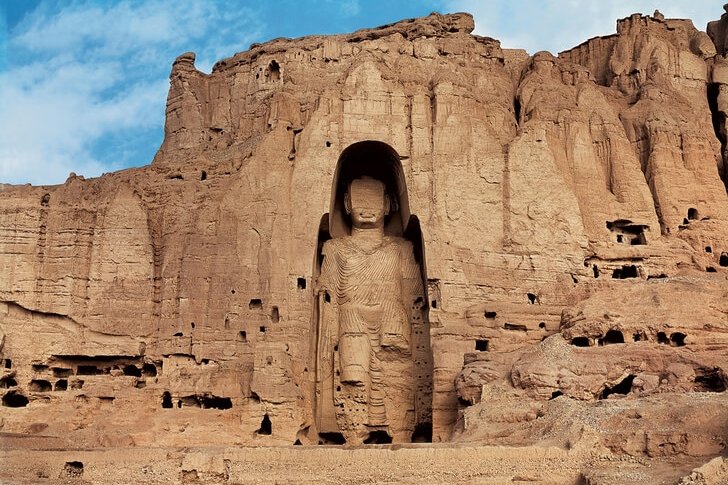
Blue Mosque (Mazar-i-Sharif)
A picturesque mosque in the province of Balkh, where Caliph Ali, the cousin of the Prophet Muhammad himself, was supposedly buried. The caliph's tomb has existed since the 12th century, the mosque was built in the 15th century. Hussein Baykara. She received the prefix "blue" due to the large number of turquoise tiles covering the walls and domes. The mosque is the best preserved ancient monument in Afghanistan.
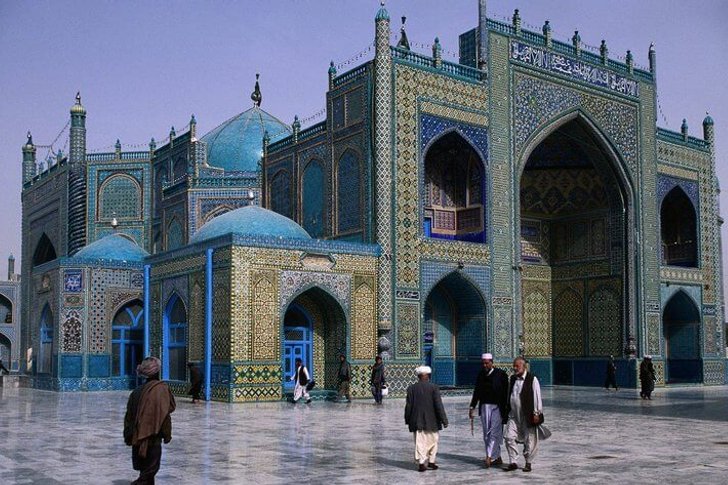
Juma Mosque in Herat
A magnificent temple, in the creation of which the philosopher and poet Alisher Navoi took part. Due to the numerous wars of the last 30 years, the mosque was completely destroyed, but at the moment it has been restored. The renovated and restored building is covered with rich paintings, the courtyard can accommodate almost 5,000 believers. There is also a large cauldron of the 14th century, in which sherbet has been prepared for distribution to people for the holidays for six centuries.
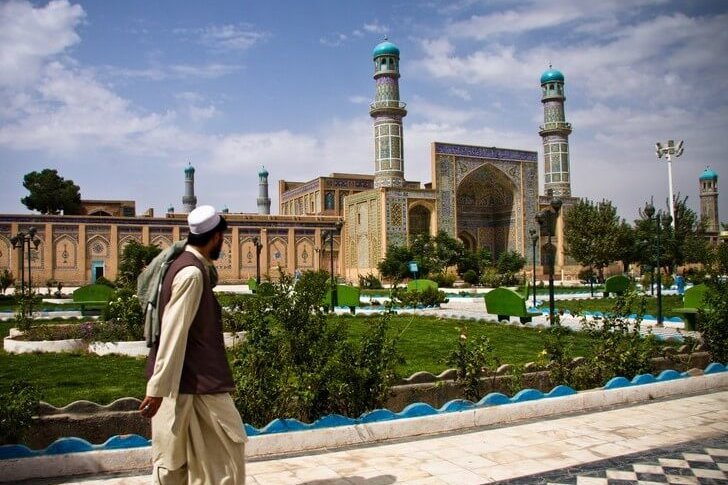
Id-Gah Mosque
The largest mosque in Kabul. Here Emir Amanullah Khan in 1919 declared the independence of Afghanistan. Id-Gah (translated as "festive") is one of the centers of religious life in Kabul. Large Muslim holidays are held here on a grand scale, during which thousands of Afghans come to pray at the walls and in the square in front of the mosque.
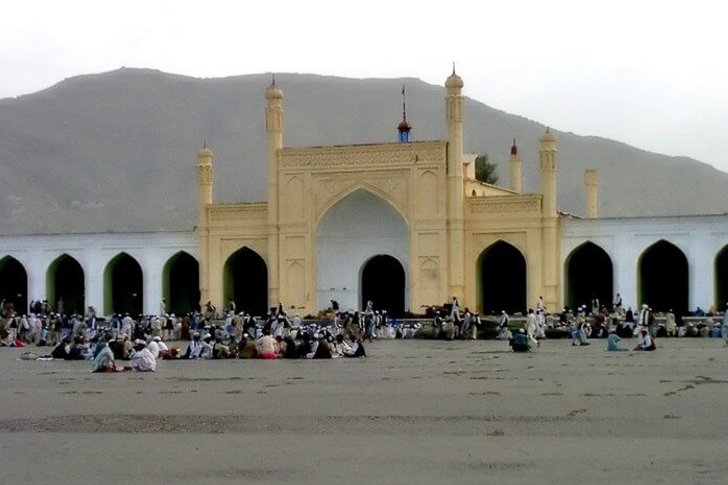
Jam minaret
12th century building in the ancient city of Firuzukh. This priceless architectural monument is lost in the mountains in the north-west of the country, it is very difficult to get to it because of the military situation. The 65-meter minaret has been perfectly preserved, the external decoration of the walls has almost completely survived for 8 centuries. It was built during the heyday of the Ghurid dynasty, which in the Middle Ages controlled a vast territory from the Bay of Bengal to the Indian city of Nishapur.
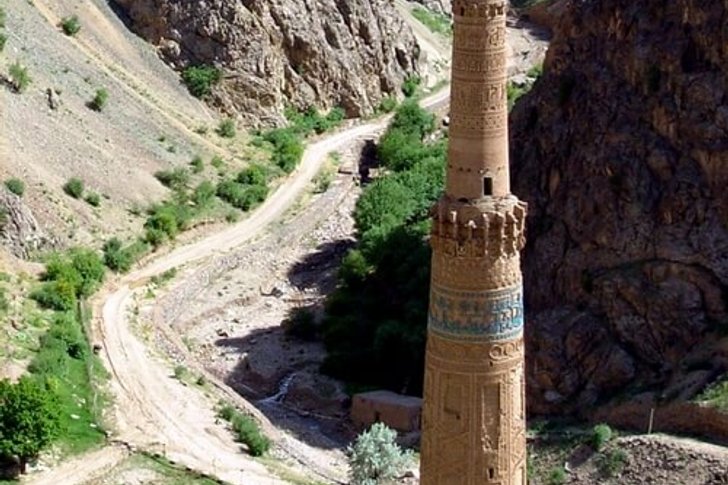
Park complex Gardens of Babur
Kabul Park, where the tomb of the founder of the Mughal dynasty Babur is located. This is a series of 15 cascading terraces, made in the typical style of Mughal architecture. The tomb of the emperor is located in the middle of the park. During the civil war, most of the buildings were destroyed and the trees were cut down, but in 2011 the park was completely restored.

Kabul Museum
A collection of ancient artifacts of various cultures that existed at different times in Afghanistan. The museum has a difficult fate - in 1996, after the Taliban came to power, the collection was 70% looted and destroyed, some exhibits were taken out. In 2004, the restored museum reopened to the public.

Citadel of Herat
Also known as the Citadel of Alexander, as it was built during the conquest of this area by Alexander the Great. Under the leadership of UNESCO, excavations were carried out here, and many interesting artifacts were discovered, which are presented in the collections of the citadel museum. The citadel experienced the siege of numerous armies in the Middle Ages.
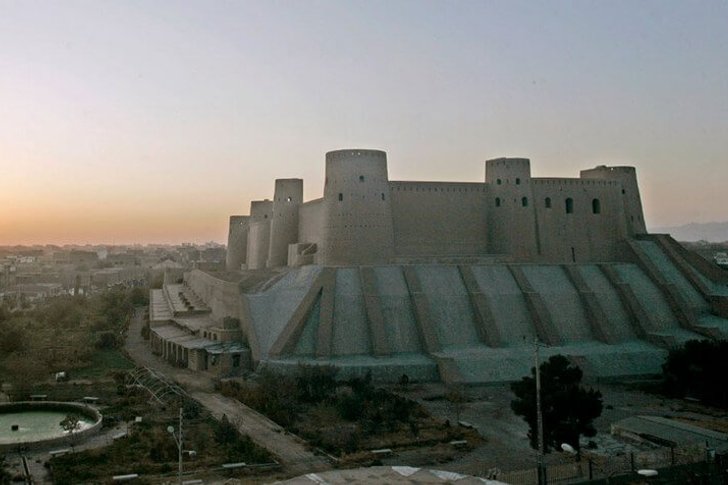
Bala Hissar Fortress
Construction of the V century in the city of Kabul. It served as a hideout for the rulers of Afghanistan for many centuries. The fortress was rebuilt many times to make it more reliable. In the 19th century during the Anglo-Afghan war, part of the buildings was destroyed by order of the English General Roberts. Now the citadel is used as a place of deployment of the Afghan military.
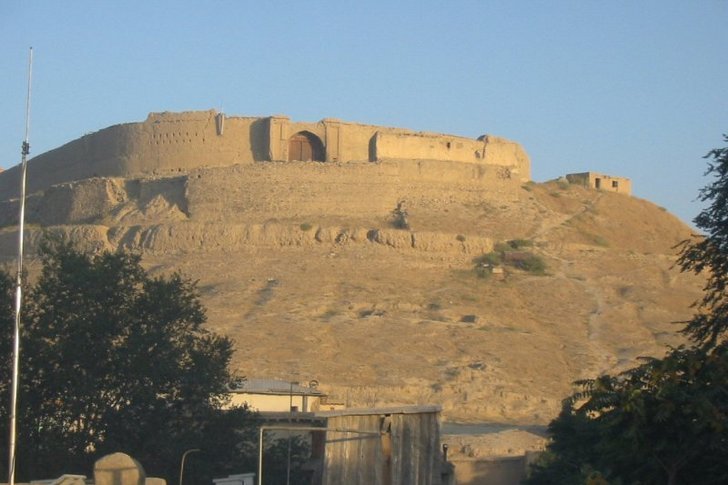
Khyber Pass
Mountain pass on the border of Pakistan and Afghanistan. A beautiful mountain road 53 km long, which is an alternation of deep and narrow gorges. The railway and the Kabul-Peshawar highway are laid along the passage. This is a strategic location, reinforced with gun emplacements, military cordons and posts to protect the border.
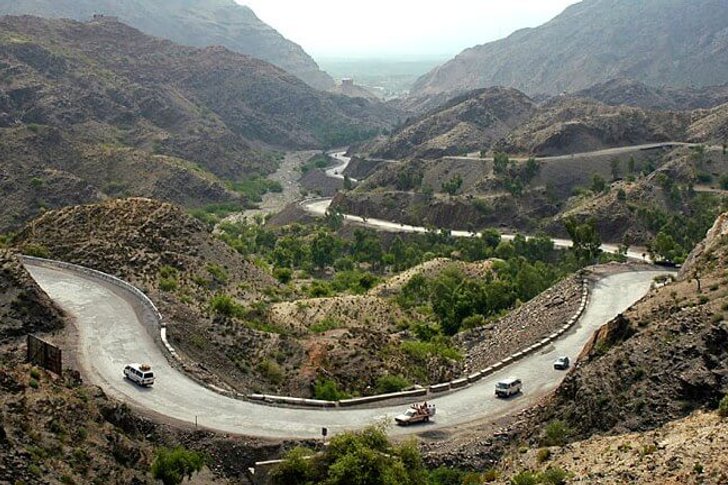
Panjshir Gorge
Translated from the local language, it is called the Five Lions Gorge. A picturesque valley in the Panjshir province. On its territory there are convenient passes leading from the northern provinces to the southern ones. During hostilities, the gorge turns into a convenient shelter and an impregnable fortress, from where it is convenient to carry out partisan attacks.
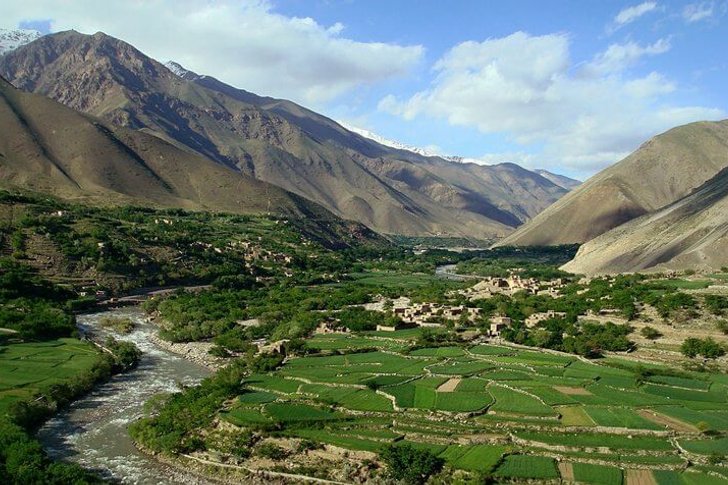
Blue lakes of Bande Amir
A network of reservoirs in the heart of Afghanistan. The lakes are surrounded by mountains and steppes. The piercing color of the water from blue to deep blue looks very picturesque in contrast with the white and pink limestone of the surrounding rocks. Bande Amir is included in the list of the most beautiful colored lakes in the world and in the UNESCO Natural Heritage List.
